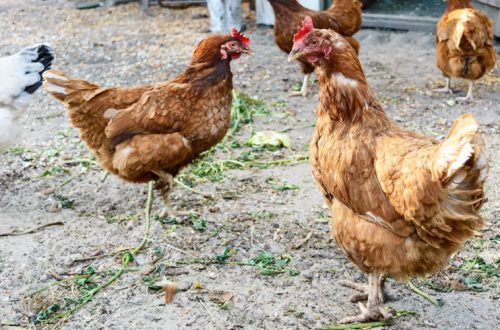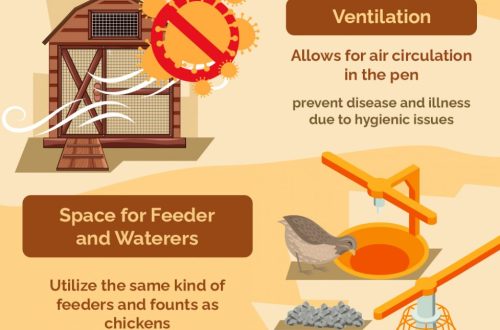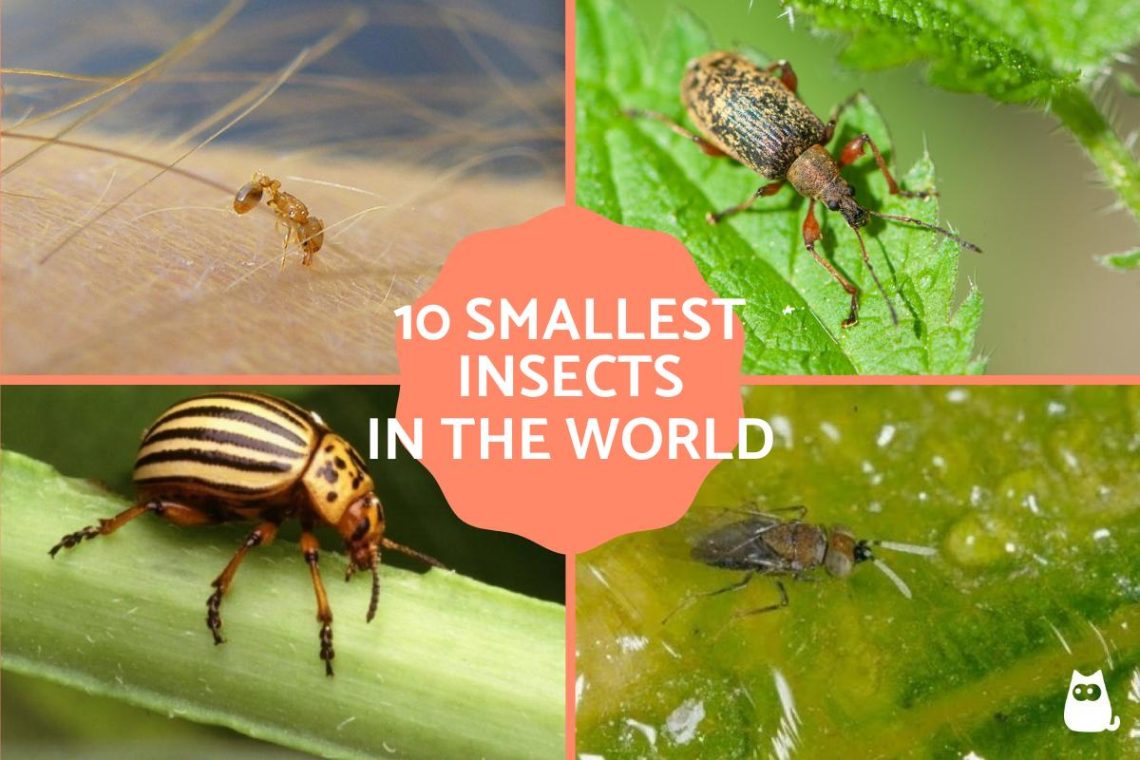
Top 10 smallest insects in the world
Now on our planet there are more than a million different species of insects. Many of them are fairly well known, and some have only recently been studied. Despite the fact that a person does not notice the benefit or harm of many of them, each variety plays a big role in the Earth’s ecosystem, even the smallest ones. This is a proven fact!
Term “insects” they began to be used in the scientific field only in the second half of the 18th century, then global studies of this unusual class of living beings began.
In this article, we will look at what the smallest insects in the world are, what they really are.
Contents
- 10 Mymaridae Haliday, 4 мм
- 9. Gonatocerus, 2,6 мм
- 8. Micronecta scholtzi, 2мм
- 7. Nanosella fungi, 0,39 mm
- 6. Scydosella musawawasensis, 0,337 male
- 5. Tinkerbella nana, 0,25 mm
- 4. Megaphragma mymaripenne, 0,2 мм
- 3. Megaphragma caribea, 0,171 mm
- 2. Dicopomorpha echmepterygis, 0,139 мм
- 1. Alaptus magnanimus Annandale, 0,12 mm
10 Mymaridae Haliday, 4 мм
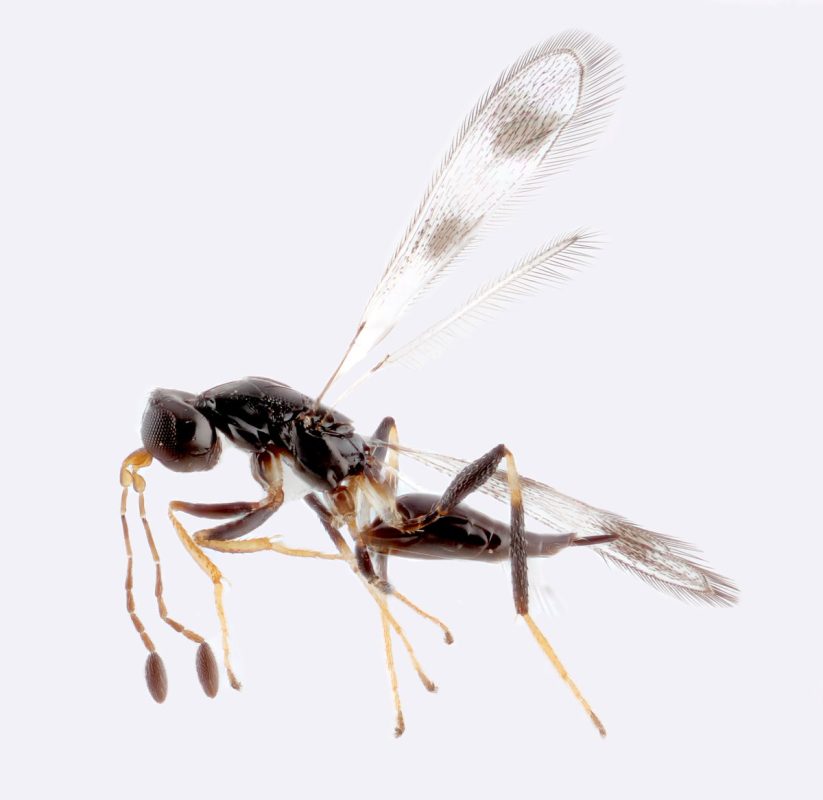 This species belongs to the family of parasitic wasps. Some species can parasitize aquatic insects, following them underwater, but mostly they are beetles and bugs. Such in Europe, 5 species were found.
This species belongs to the family of parasitic wasps. Some species can parasitize aquatic insects, following them underwater, but mostly they are beetles and bugs. Such in Europe, 5 species were found.
Mymaridae Haliday necessary in nature to control the actions of pests. For example, one species controls the weevil, which is a major pest to eucalyptus trees in Europe, New Zealand, parts of Africa, and southern Europe.
The Mymaridae family includes about 100 genera currently discovered and about 1400 species. This family also includes the smallest insects in the world, the size of which does not exceed the ciliates.
9. Gonatocerus, 2,6 мм
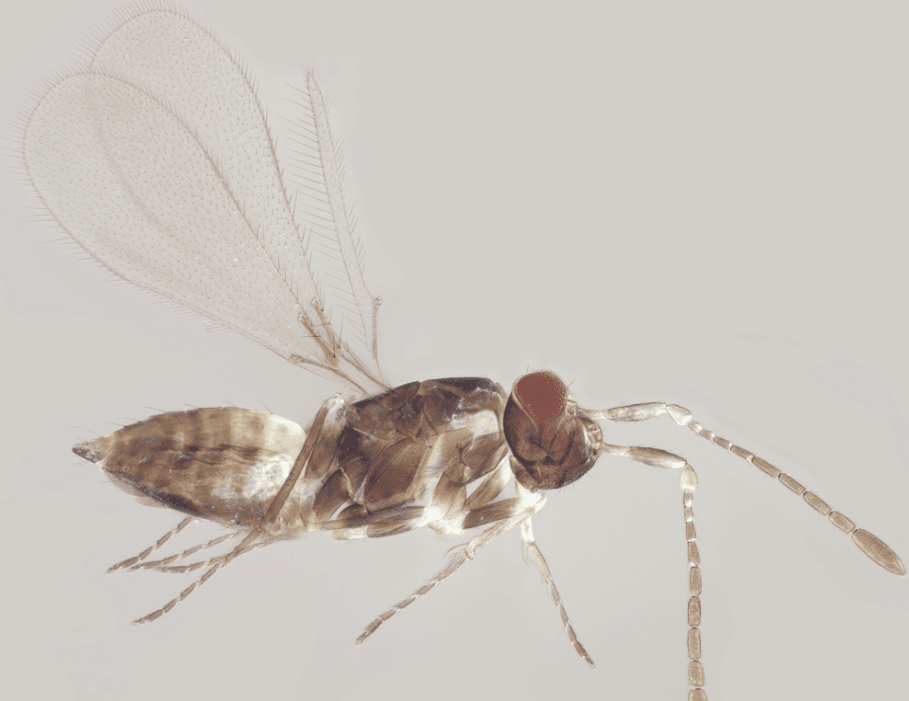 Belongs to the Mymaridae family described above. It belongs to parasitic insects, or more precisely, to the genus of chalcidoid riders.
Belongs to the Mymaridae family described above. It belongs to parasitic insects, or more precisely, to the genus of chalcidoid riders.
This genus is not widely distributed. Scientists have about 40 species in the Palearctic, about 80 in Australia and about 100 species in the Neotropics.
Insects are equipped with antennae, showing gender: 12-segmented (8-segmented flagellum) in females and 13-segmented (11-segmented flagellum) in males. Each individual is equipped with legs and 4 wings, where the hind ones are smaller than the front ones. Most often Gonatocerus parasitize on the eggs of leafhoppers and humpbacks.
8. Micronecta scholtzi, 2мм
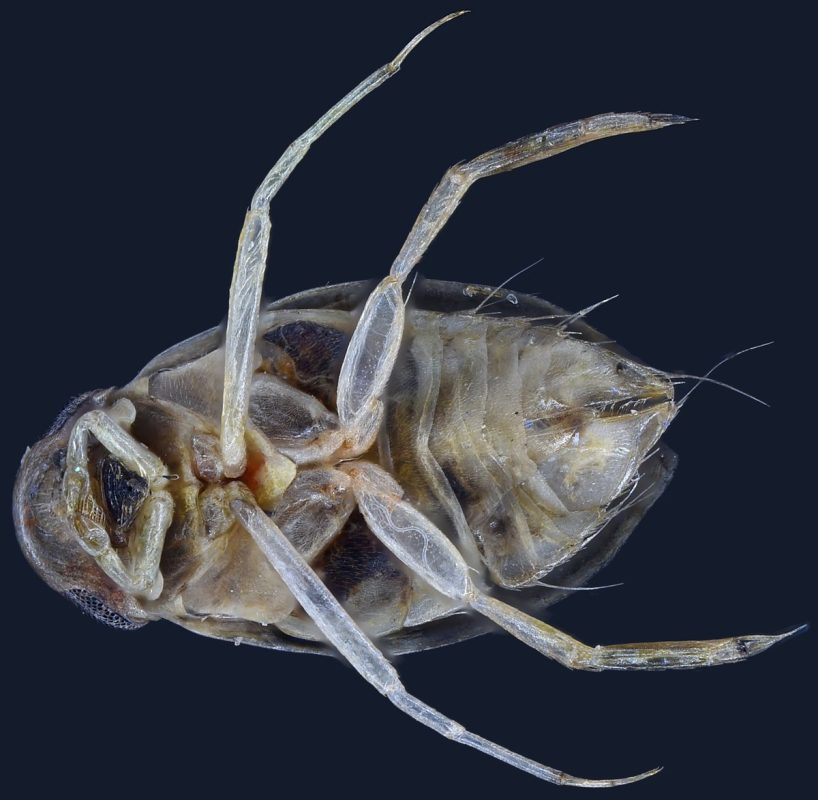 This type of water bug belongs to the rower family. The arthropod lives only in Europe. The insect makes very loud (for its class and size) sounds.
This type of water bug belongs to the rower family. The arthropod lives only in Europe. The insect makes very loud (for its class and size) sounds.
Biologists from France and Switzerland measured the sound volume Micronecta scholtzi, which showed results up to 99,2 dB. These figures can be compared to the volume of a freight train passing by.
Only the male can reproduce such a sound to attract the female. He does this by running his penis (which is about the size of a human hair) across his abdomen.
The fact that the water bug can produce such sounds was unknown, since almost completely (99%) the volume is lost when the medium changes from water to air.
They live most often in ponds or lakes where stagnant water is located. They are also found in running water, but much less frequently.
7. Nanosella fungi, 0,39 mm
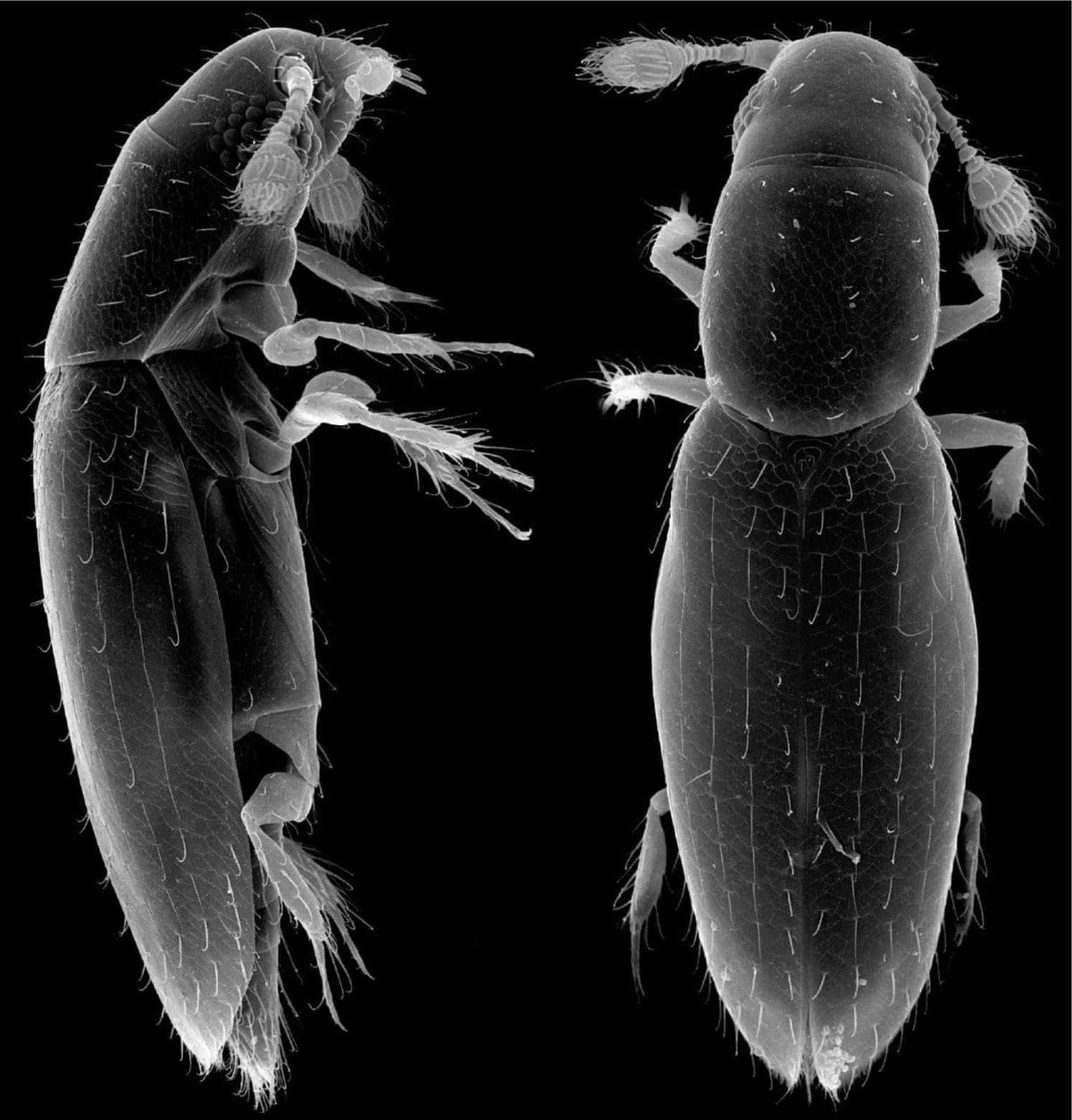 This type of beetle insect belongs to the family of winged insects, a neotropical species. Until 2015, scientists believed that Nanosella fungi is the smallest beetle insect, but soon this information was refuted by entomologists.
This type of beetle insect belongs to the family of winged insects, a neotropical species. Until 2015, scientists believed that Nanosella fungi is the smallest beetle insect, but soon this information was refuted by entomologists.
Initially, scientists interpreted the measurement result incorrectly. Currently, the smallest beetle insect is Scydosella musawasensis.
According to biologists, the arthropod is distributed only in the forests of the eastern regions of the United States. Most often they can be found in the spores of polypore fungi.
6. Scydosella musawawasensis, 0,337 male
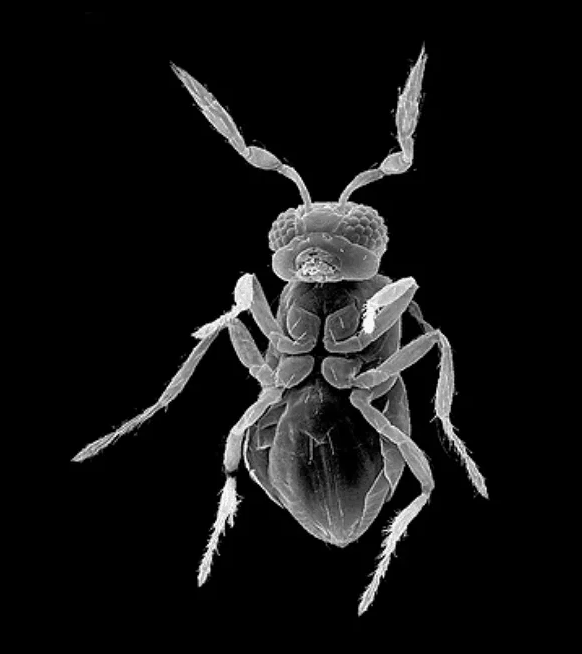 It is the smallest beetle insect. It is also the only beetle of the monotropic genus Scydosella. Distributed mainly in the central and southern regions of America (Nicaragua, Colombia).
It is the smallest beetle insect. It is also the only beetle of the monotropic genus Scydosella. Distributed mainly in the central and southern regions of America (Nicaragua, Colombia).
The shape of the body is slightly elongated, similar to an oval. Insects have yellow-brown bodies. Scydosella musawasensis considered the smallest free-living insect, as the smallest is the parasite.
The species was first described only in 1999, when several specimens were found in Nicaragua. The habitat of insects is inside the tubular layer in polypore fungi.
5. Tinkerbella nana, 0,25 mm
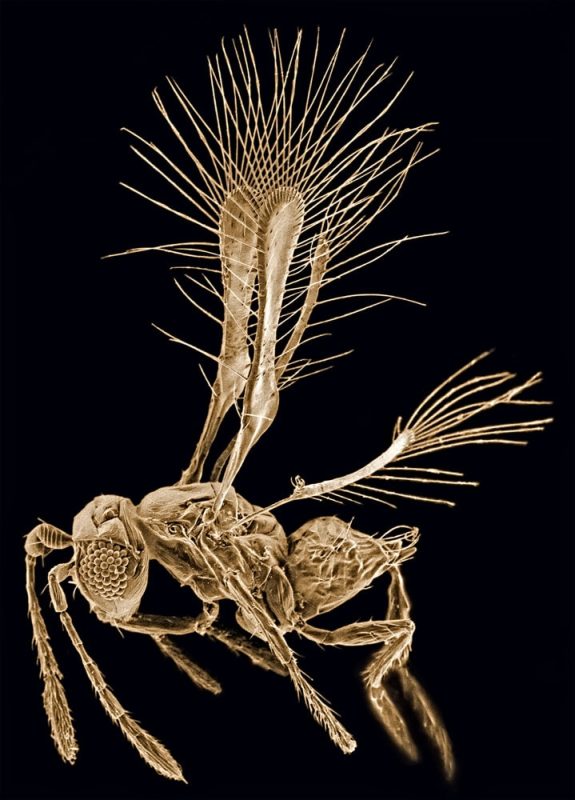 This species belongs to the Mymaridae family (you can read about it a little higher). The body length of individuals is most often within 0,25 mm (in males it is most often 210-230 mm, and in females more – from 225 to 250 mm).
This species belongs to the Mymaridae family (you can read about it a little higher). The body length of individuals is most often within 0,25 mm (in males it is most often 210-230 mm, and in females more – from 225 to 250 mm).
Tinkerbella nana body is light brown. In females, the flagellum of the antennae consists of 5 segments, while in males it is 10-segmented, and the club is single-segmented. Individuals have rather complex eyes (with 50 ommatidia).
The species was described in 2013 by scientists from Canada and America. The name was given in connection with interesting comparisons. The species is labeled nana, in honor of Peter Pan’s dog (as well as from the Greek word “dwarf”). And the name of the genus was given by the name of the Tinker Bell fairy from a similar book.
4. Megaphragma mymaripenne, 0,2 мм
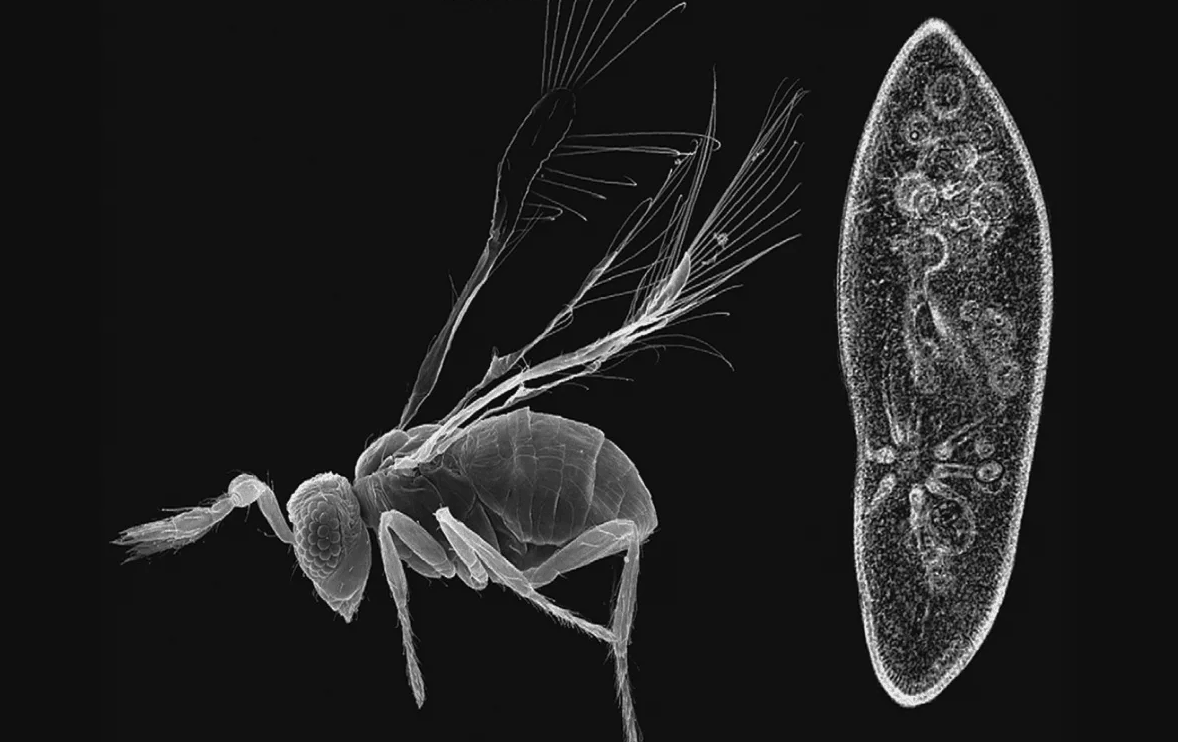 The insect belongs to the species of chalcidoid riders. There are almost no chromosomes in his brain, and his lifespan is only 5 days. The arthropod is widely distributed: it is Europe (Spain, Portugal, and so on), and Australia, and the Hawaiian Islands, and many other places.
The insect belongs to the species of chalcidoid riders. There are almost no chromosomes in his brain, and his lifespan is only 5 days. The arthropod is widely distributed: it is Europe (Spain, Portugal, and so on), and Australia, and the Hawaiian Islands, and many other places.
Size Megaphragma mymaripenne smaller than that of the ciliate shoe. Insects have a highly reduced nervous system consisting of 7400 neurons, which is several times smaller than in large species. These flying insects are known for their small set of neurons.
This species was described relatively long ago – in 1924, according to data obtained from the Hawaiian Islands.
3. Megaphragma caribea, 0,171 mm
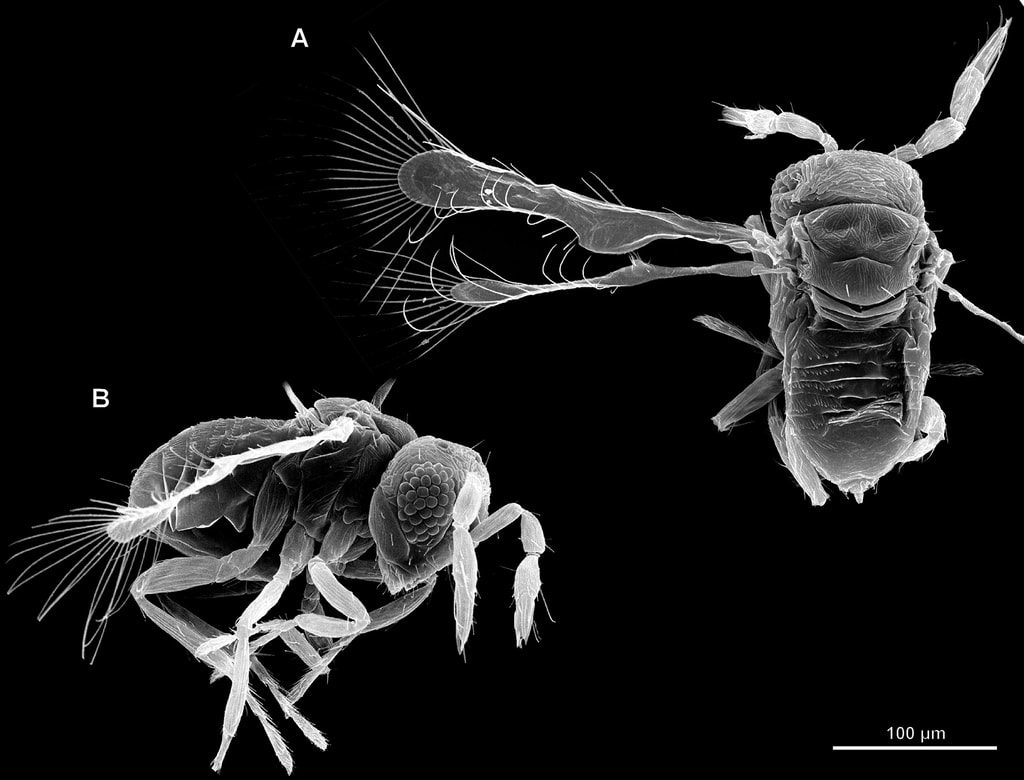 This insect also belongs to the species of chalcidoid riders. Distributed in Guadeloupe (in the eastern Caribbean Sea), therefore the species was named caribea.
This insect also belongs to the species of chalcidoid riders. Distributed in Guadeloupe (in the eastern Caribbean Sea), therefore the species was named caribea.
On average, individuals have dimensions in the region of 0,1 – 0,1778 mm – this is 170 microns. Belongs to the family of trichogrammatid wasps. Caribbean Megaphragma was first described in the literature in 1993. And until 1997, this insect was considered the smallest on our planet.
2. Dicopomorpha echmepterygis, 0,139 мм
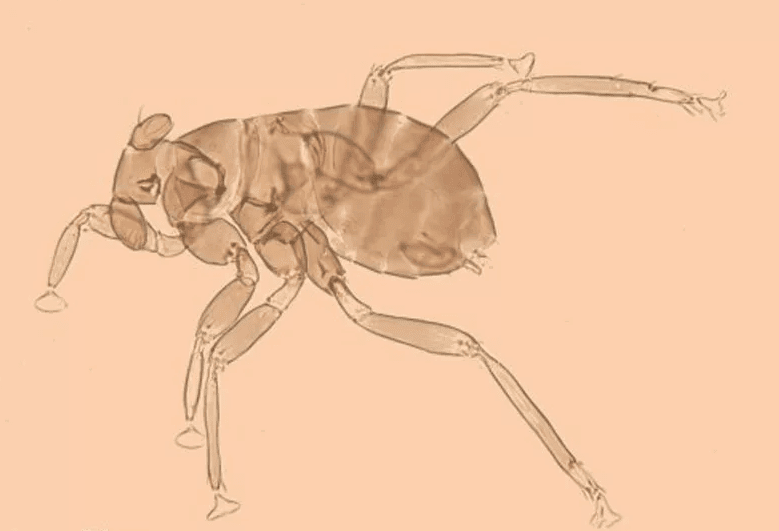 The species is considered the smallest among the insects of the planet from the family of chalcidoid ichneumon parasites. Dicopomorpha echmepterygis was discovered in Central America (in Costa Rica) in 1997, taking away the title of the smallest insect in the world from the species Megaphragma caribea.
The species is considered the smallest among the insects of the planet from the family of chalcidoid ichneumon parasites. Dicopomorpha echmepterygis was discovered in Central America (in Costa Rica) in 1997, taking away the title of the smallest insect in the world from the species Megaphragma caribea.
Male individuals are considered as the smallest in the world, since their body length does not exceed 0,139 mm in size, which, according to scientists, is less than a shoe ciliate.
Antennae approximately equal to body length. It is worth noting that the females of this species of insects are 40% larger than males, and also have wings and eyesight. Their habitat is the eggs of hay-eaters, in which insects most often parasitize.
1. Alaptus magnanimus Annandale, 0,12 mm
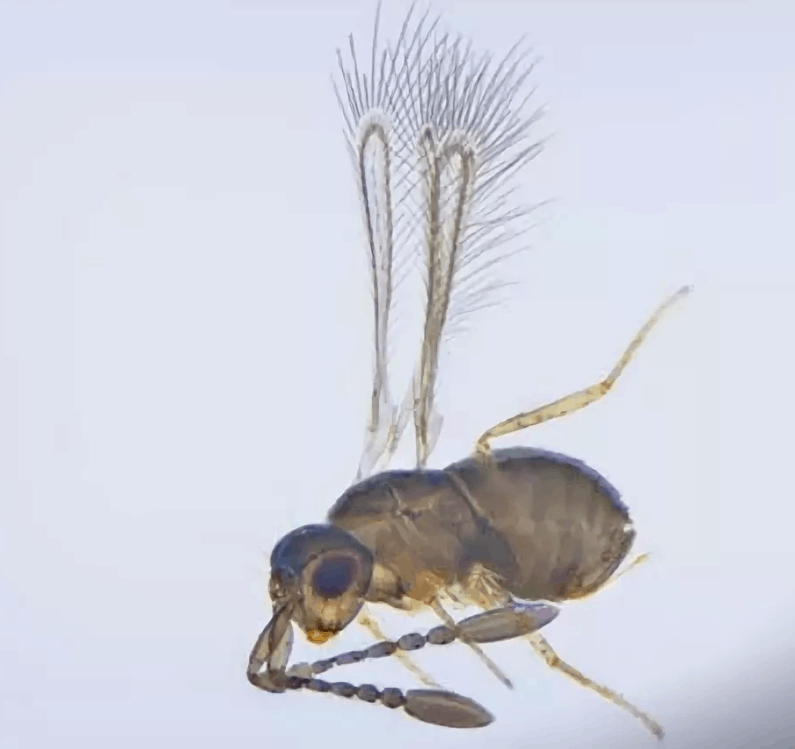 Annandale’s generous husband belongs to the family Mymaridae. It can rightfully be considered the smallest insect in the world, because the size of an adult does not exceed 0,12 mm, which is much smaller than a single-celled ciliate shoe.
Annandale’s generous husband belongs to the family Mymaridae. It can rightfully be considered the smallest insect in the world, because the size of an adult does not exceed 0,12 mm, which is much smaller than a single-celled ciliate shoe.
Alaptus magnanimus Annandale was discovered relatively long ago – back in 1909 in India. The human eye will not even be able to see this tiny creature without special magnifying devices.



